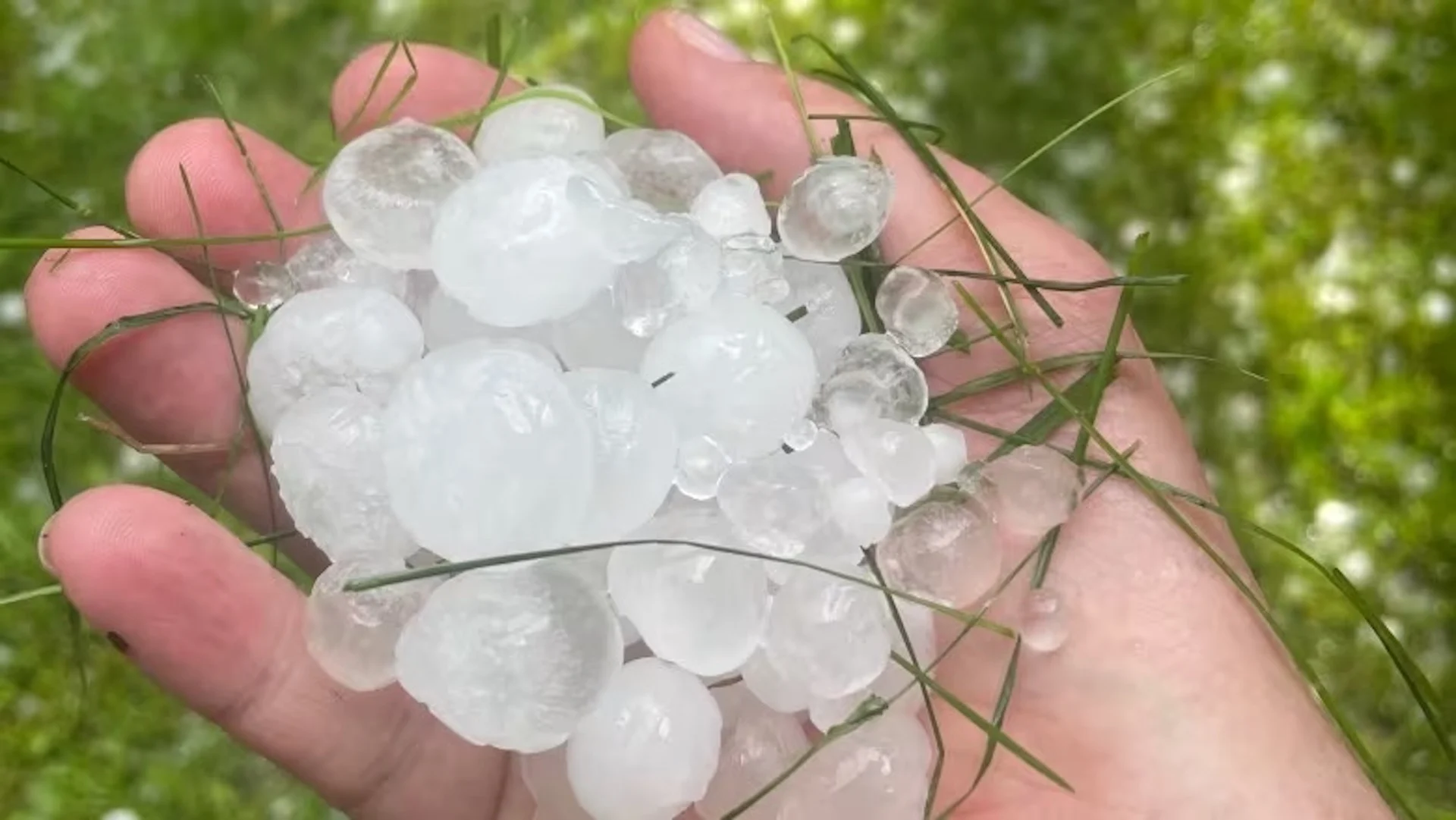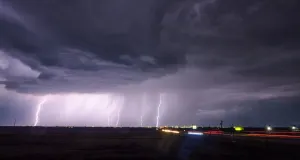
July's turbulent storm season keeping Calgary gardeners on guard
Early July is an exciting time for Stampede goers, but for Calgary's gardening community, it can be a period that arrives with at least a little wariness despite warm temperatures.
Known in some green-thumb circles as "plant hell week," this time of year can mean some trepidation because, after weeks of hard work and growth, gardens can face some nasty storms and hail.
"Predictably, we get the biggest thunderstorms, lightning and hail during Stampede week, and it actually goes all across Alberta at various points in July," said Kath Smyth, a horticulturist with the Calgary Horticultural Society.
SEE ALSO: Winnipeg's historic hailstorm was so notable, it's a graduate thesis
Smyth, who began gardening with her grandfather as a child, has been an horticulturist for almost 50 years. Usually, she can predict the direction the hail is coming from, but this has changed in recent years.
"My succulents took a beating the second day after I put them out last year. The hail came from the wrong direction and I wasn't fast enough," she said.
Susan Johnson lives in northwest Calgary. A few years ago, a hailstorm tore through her garden.

A photo of a large hailstone that fell in Calgary during a previous July. It was one of many that destroyed Susan Johnson's garden. Calgary gardeners keep a close tab on the weather this month because of the potential for thunderstorms and hail. (Susan Johnson)
"It damaged everything. It just wiped out my entire vegetable garden," said Johnson.
Many gardeners know this frustration in Calgary.
According to Justin Shelley, a meteorologist with Environment and Climate Change Canada, the city typically experiences a number of thunderstorms in July, just as it has so far this season.
"Especially from a gardening standpoint, those heavy downpours and that hail and winds can definitely damage plants like that," Shelley said.
"This is typically when we see more of this thunderstorm activity occur."
Alberta has a hail suppression system that reduces the size of hail. However, Calgary's weather conditions are unpredictable.
"We can get hailstorms coming up out of nowhere … you don't get a lot of notice," Johnson said.
There are several ways to protect gardens from hail, according to Johnson and Smyth.

A severe thunderstorm caused flash flooding on some Calgary roads earlier this month. (Prairie Storm Chasers/Twitter)
Some gardeners place tarps or garden netting over their plants. In extreme cases, household objects like pots and plastic containers are pretty handy.
As an experienced gardener, Smyth has several semi-permanent systems in place to protect her garden.
"I have what I call my hail suppression devices, which are essentially dollar store umbrellas," she said.
She also uses garden netting and has a succulent and cacti collection planted in front of other plants to "protect them because the rain and the hail comes straight off the leaves."
Some gardeners, like Johnson, use permanent structures, such as the one she put up after the hail damage to her garden.

Susan Johnson built a garden cover using a car shed frame to help protect her plants from hail and heavy rain. (Susan Johnson)
"I decided no, I have to do something," she said.
"So then we put up that car shed frame and spent about $200 on buying some greenhouse grade poly and putting it over that frame and that really protects [the garden]."
Johnson said permanent and semi-permanent structures are best for Calgary's unpredictable weather.
"I think if you're a serious, particularly vegetable gardener, then you really need to have something that is semi-permanent, and we take the poly off of that frame in the winter and store it away so that it lasts a lot longer," she said.
Other remedies include planting native plants that are acclimated to this region and asking a professional for help.
Smyth advises new gardeners to be aware of the positioning of their yard.
"You want to put things so that you put them in the good exposures. Read your plant labels, talk to the garden centre folks. They really know their stuff," she said.
WATCH: Gardening club pairs youths and seniors to share knowledge and community
Thumbnail courtesy of Christine Boyd/CBC.
The story was written by Tracy Thomas and published for CBC News.









